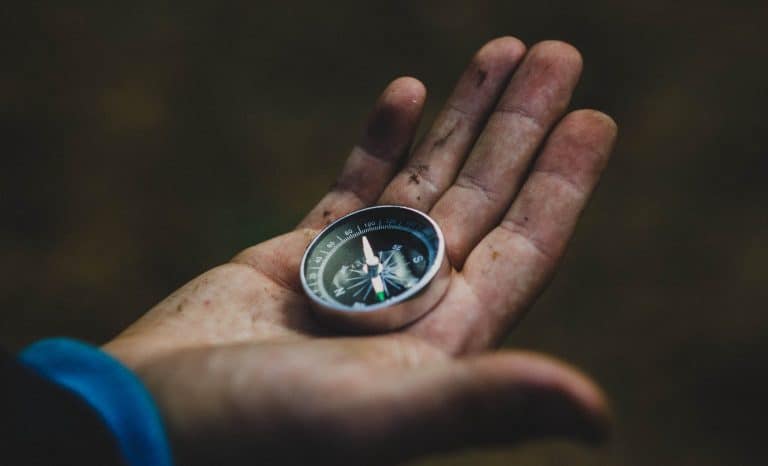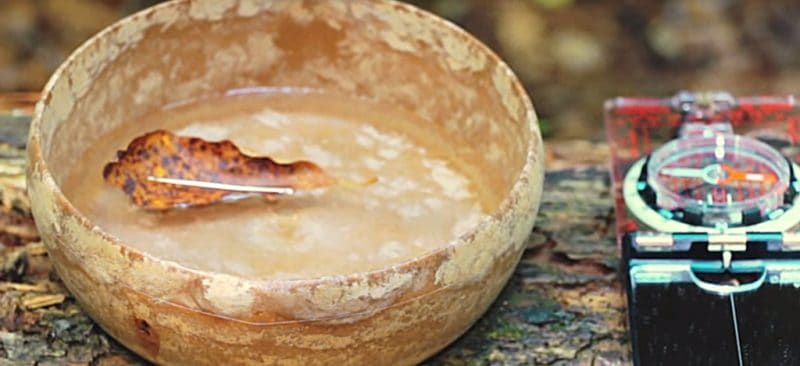Exploring unfamiliar places is fun, isn’t? I would love to say yes; however, that thing is only true if getting lost is not a threat to your survival especially if you are in the woods, and you do not have any helpful navigation system such as GPS.
Fortunately, there are more ways to find your direction in the woods without a GPS which you can apply once you find yourself not recognizing your surroundings or not able to tell the direction from which you’ve been.
You might also enjoy reading: 10+ Things You Learn While Backpacking The World
How To Use The Sun To Find Direction?
The sun, sticks, and shadows are helpful in navigating without a GPS
Since our planet rotates on its axis, it tends to rise in the east and set in the west, casting a shadow that reveals the four cardinal directions through this primitive yet effective method of finding direction.
For this trick, just drive an (at least) 8-inch stick into the ground. If it’s sunny, the stick will cast a shadow.
The next thing you have to do is put a small pebble (or any marker) at the tip of the shadow. After 15-30 minutes, you will notice a movement of the shadow.
Now, you need to draw a line through the two markers which will give you an east/west line. Observe which side the formed shadow is pointing over the east/west line. You will notice that it will point in a northerly direction if the sun favors the southern side of the sky.
Finally, you can draw a line through the east/west line that you created at a 90-degree angle, giving you your four coordinates: north, south, east and west.
How To Use Stars To Find Direction?
At night, stars can be your guide in finding directions
If you are in the northern hemisphere, you can use the North Star to find the location of the north. The North Star (which others also call the Pole star), is an extremely helpful navigation aid since it is found almost above the polar north.
Although it is not too bright, The North star stays at a fixed place in the sky.
The W-shaped Cassiopeia and the Big Dipper (Ursa Major) will guide you in finding the North Star. Both of these constellations do not set, and they also remain in the same location.
To find north, look for the Big Dipper in the sky. Follow the edge of its cup (the shape of the Big Dipper is like a ladle that has a cup and a handle) 5 or 6 times its length toward a medium bright star which is the North Star.
To ensure that it is the North Star, you can find the Cassiopeia. The North Star is located halfway between the Big Dipper and Cassiopeia.
In the Southern hemisphere, look for the Southern Cross constellation to find south.
These tricks are effective; however they only work at night, so make sure to find ways to stay warm especially if it is a cold and windy one.
How To Use an Analog Wristwatch To Find Direction?
Analog watch can also tell you your four coordinates
This method is another useful way when finding directions during the day. The first thing you need to remember when applying it is to ensure that your watch is accurate.
Also, your analog watch should have hands. A digital watch will not work since the hands of the watch are essential in identifying the direction.
This method also works best when your watch is on a level surface. Make sure it rests flat against your palm, and hold it in front of you as if you are holding a compass.
The position of the watch depends on which half of the earth you are in. If you are in the Southern Hemisphere, make sure that the “12” points at the sun. The halfway point between your watch’s hour hand and the “12” would be the north direction.
Meanwhile, in the Northern hemisphere, it should be the hour hand that is pointing at the sun. This time, the halfway point between the “12” and the hour hand would be the south.
How to Use Landmarks to Tell Direction in the Woods?
There will always be landmarks around you. It can be a mountain, river, or lake. It can also be a humanmade landmark such us roads, monuments or bridges.
You can try lining up one landmark with another that is further away. This trick is useful in making sure that you are going straight.
Most people think that walking straight is easy; however, if you do not have any means to get your bearings, you can walk in circles and think that you are following a straight line.
Mark a landmark once you reach one, and do the same thing when you come to another landmark to help you find your way if you get lost.
Your sleeping systems should also be ready anytime should you need to rest while traveling. Make sure to bring not only your main sleeping gears, but also the necessary comfort- and warmth- enhancing tools — your portable hammock, sleeping bag liner, and others.
All this equipment will enable you to have a good rest or sleep in your hammock, tent, or sleeping bag.
An archaeological monument is a landmark that you can use in case you get lost in the wild
How to make your own compass in the woods?
A DIY compass can be an alternative to a regular compass
Another instrument you can use is your creativity. Just prepare a leaf, a piece of silk or wool, a needle, and a puddle of water. For the needle to have a magnetic charge, rub it with the silk or wool 100 times. You can also rub the needle through your hair; just be careful in doing so.
The next thing you need to do is put the leaf gently on the pool of water. Afterward, you can put the needle on top. Your needle must align with the magnetic north in the absence of wind. You will also find out that the side with an eye or the thicker tip of the needle favors the northern direction.
The shadow will also tell which way the needle is pointing. Shadows tend to favor north as well, and from there, you can determine your coordinates.
Conclusion:
Did you enjoy learning the 5 ways to find your direction in the woods without a GPS?
Even though I often consider myself as someone who has a good sense of direction, I have to admit that I often get lost in the wild.
However, these horrible experiences are what motivated me to learn the tips and tricks that I just shared, making me (and you too, hopefully) more prepared for my next trek.
Author Bio: Laura is the founder of CleverAdventurer, where she shares her knowledge, tips about hiking, camping, backpacking in the wild. She is a young blogger who is very passionate about outdoor activities. She wishes to share her experience during the adventure with people who have the same passion.
If you have any other useful ideas on how to tell the direction in the woods, we would love to hear about it and listed here. Please feel FREE to suggest a comment below. We will be more than happy to add it here and give you a credit and backlink for it.






